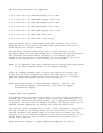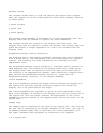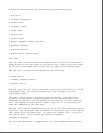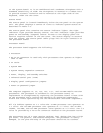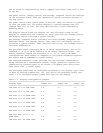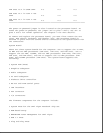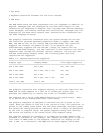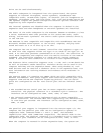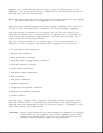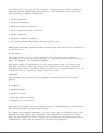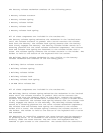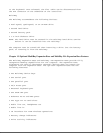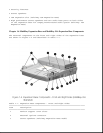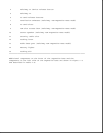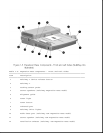
drive can be used simultaneously.
The audio subsystem is integrated into the system board. The system
supports an internal microphone, stereo speakers, SoundBlaster PRO
compatible audio, CD-ROM audio inputs, an external jack for headphones or
speakers, microphone jack, and line-input jack. Line and CD-ROM inputs and
the speaker outputs are passed through the external options connector and
supported by both expansion bases.
The internal speakers are disabled when the computer is docked in the
expansion base and when headphones or external speakers are installed.
The heart of the audio subsystem is the ESS1688 (ESS688 on Windows 3.1/Dos
6 units) AudioDrive ASIC that provides 16-bit stereo WAV audio, audio
mixing, and FM music synthesis. The entire audio system connects directly
to the ISA bus.
The ESS1688 is OPL3 compatible and compatible with SoundBlaster PRO and
Microsoft Windows Sound System. It can record, compress, and play back
sound and music at 8 or 16 bits up to 44 Khz.
The computer has one PC Card (PCMCIA) controller that supports a Type III
PC card slot that supports either two Type II PC Cards or one Type III PC
Card. A PC card door prevents contamination of the slot. The controller is
Intel ExCA compatible and complies with the Berlin revision of the PCMCIA
standard. The controller supports 5-V cards and all current Compaq PC
Cards. A second PC Card controller is located in both expansion bases.
The diskette drive controller supports 720K, 1.2 MB, and 1.44 MB densities
as well as automatic media detection. Diskette drives can be used in the
computer MultiBay and the expansion bases. When using Windows 95, real
mode drivers must be used for a diskette drive in the expansion base. For
more information see "Solving Diskette and Diskette Drive Problems" in
Chapter 2.
The PC87334 Super I/O contains two UARTs which are fully compatible with
NS15450 and NS16550. Both ports support MIDI baud rates and one port also
supports IrDA and HP SIR compliant signaling protocol. The two serial
ports are configured as one RS- 232C serial port and one infrared (IrDA)
port.
o The standard RS-232 serial port has an 82550 compatible serial
controller. The physical connector is a standard 9-pin D connector. The
interface can be configured as COM1, COM2, COM3, or COM4.
o The infrared communication is implemented with an 82550 compatible
serial controller. The minimum data rate supported by the Infrared Port
is 115K bits per seconds. The interface can be configured as COM1, COM2,
COM3, or COM4.
The parallel port support is integrated into the PC87334 Super I/O. The
computer has one parallel port that can be configured to operate in
compatible mode, enhanced modes 1.7 and 1.9 (EPP), and extended
capabilities (ECP) mode (IEEE-1284 compatible). The default mode is the
compatible mode. The physical connector is a standard 25-pin D connector.
The parallel port interface can be configured as LPT1, LPT2, or LPT3.
When the computer is mounted in either expansion base, the system can




